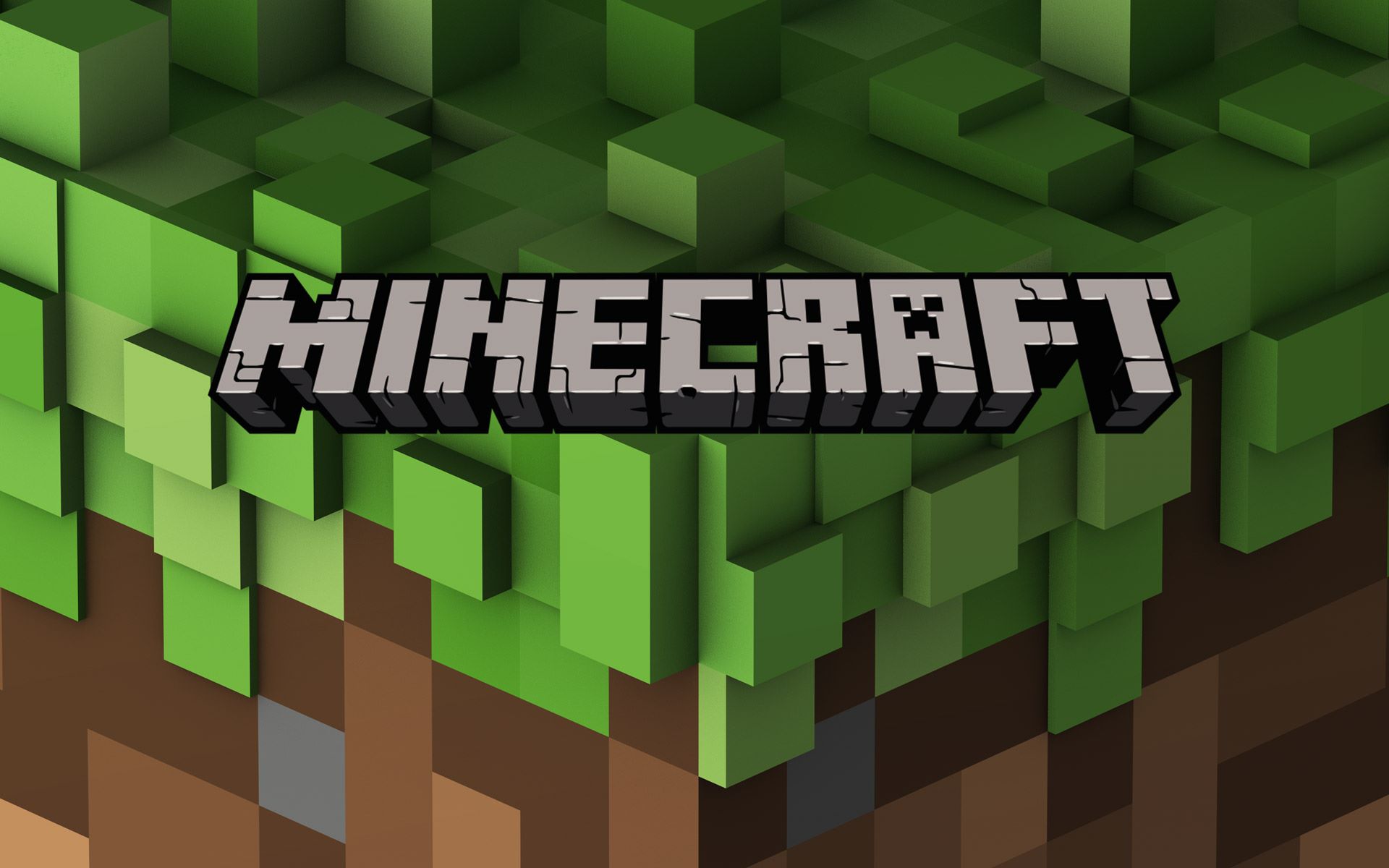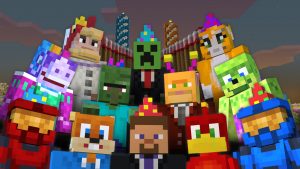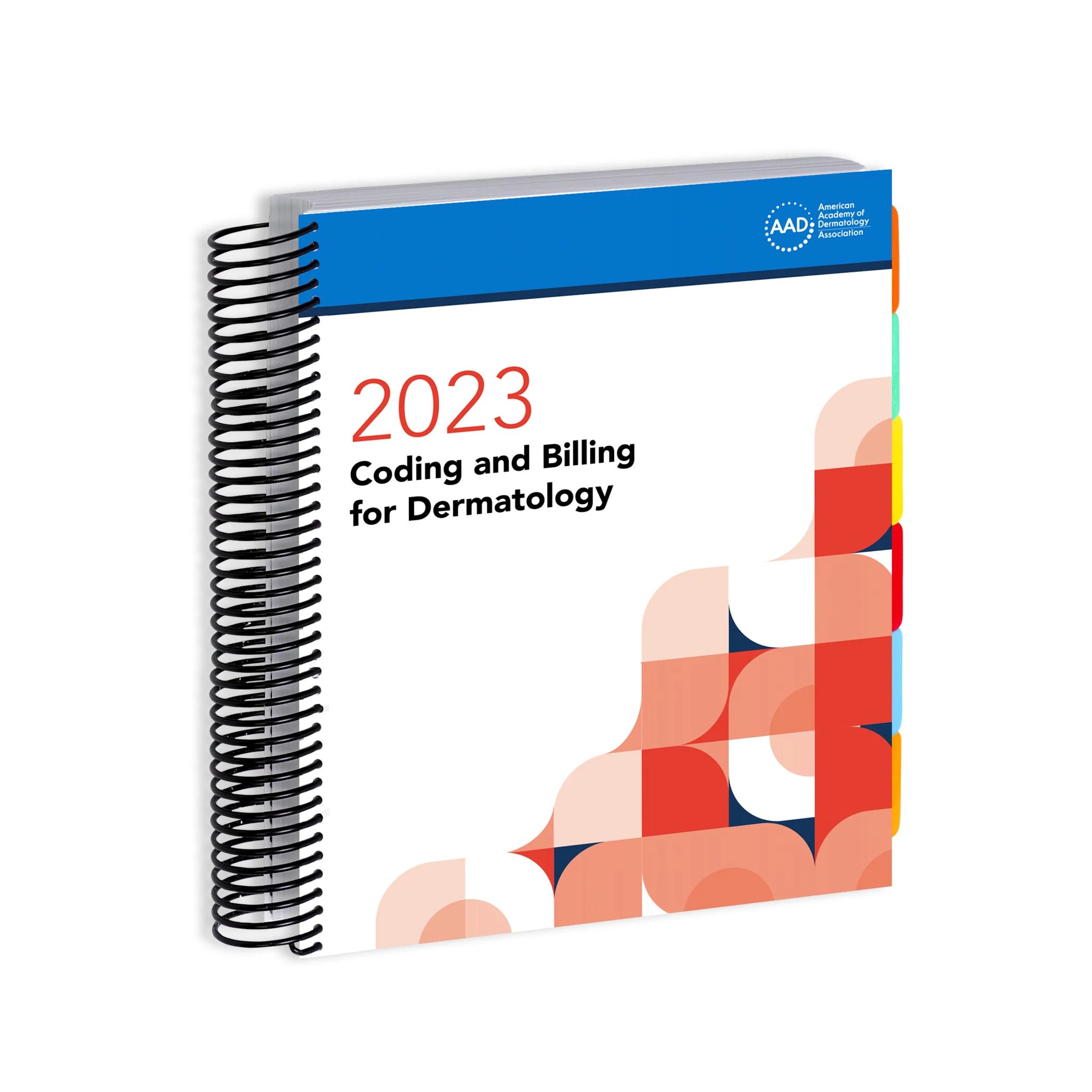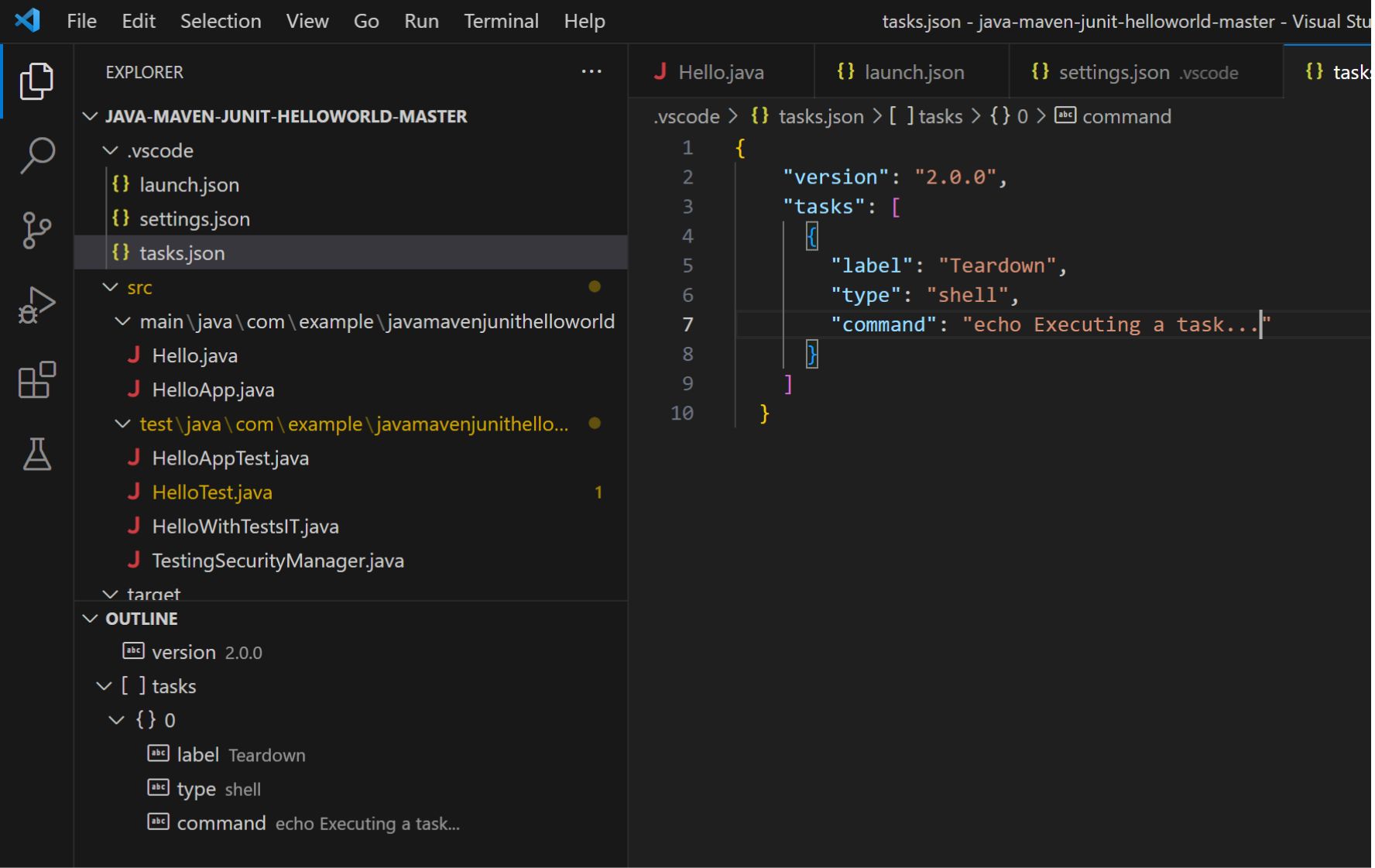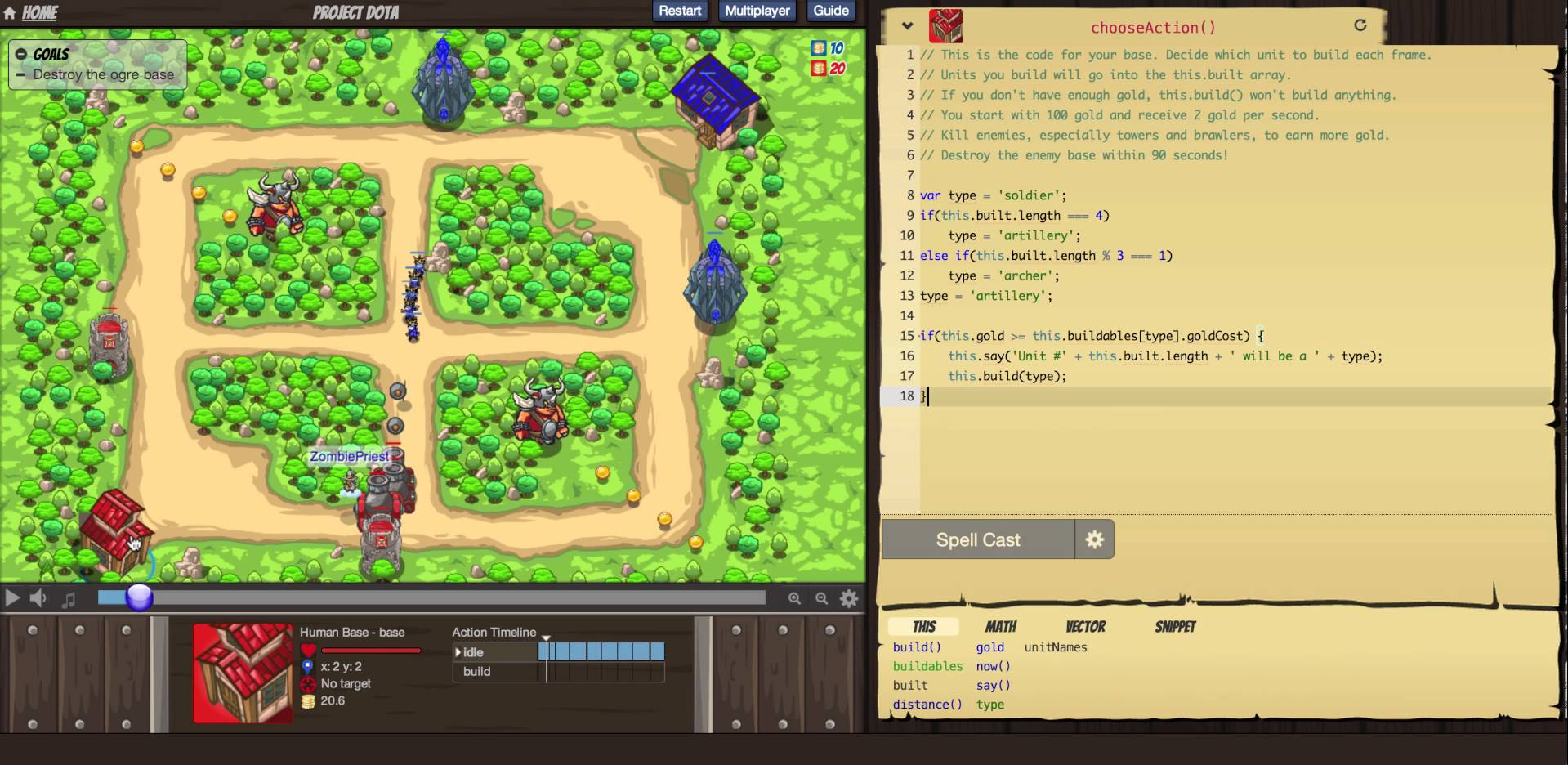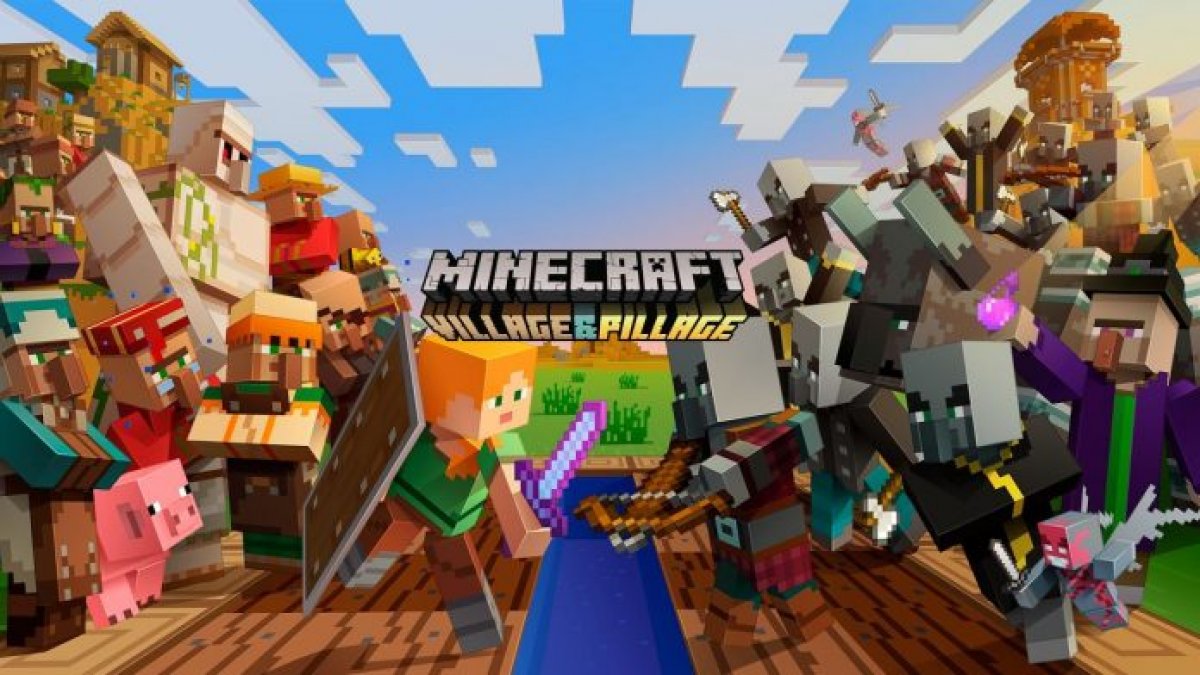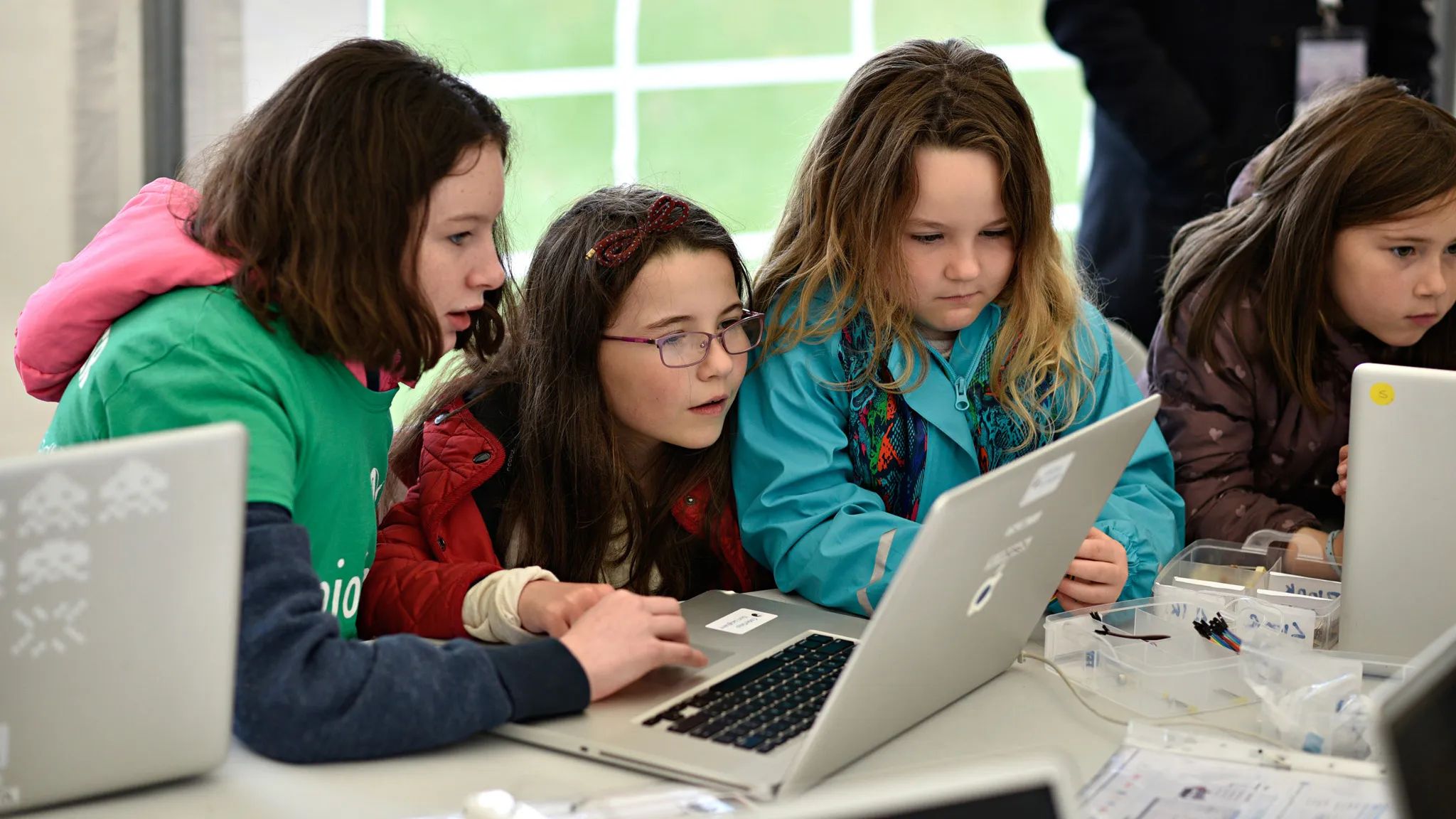Introduction
Welcome to the immersive and creative world of Minecraft! As one of the most popular sandbox video games of all time, Minecraft allows players to build, explore, and interact with a blocky 3D world. The game’s success can be attributed to its endless possibilities and the ability for players to modify and customize their gameplay experience.
Behind the scenes of Minecraft lies a sophisticated coding infrastructure that powers the game and enables its vast array of features. In this article, we will explore the coding languages and techniques employed in Minecraft, giving you a glimpse into the fascinating world of game development.
At its core, Minecraft utilizes the Java programming language. Java is a powerful and versatile programming language known for its cross-platform compatibility and object-oriented nature. The choice to use Java was deliberate, as it allows players to enjoy Minecraft on various operating systems, including Windows, macOS, and Linux.
Java provides Minecraft with the necessary tools to handle complex game mechanics, including rendering graphics, managing user input, and implementing game logic. By leveraging Java’s extensive libraries and frameworks, the developers at Mojang Studios have been able to continuously improve and expand the game over the years.
To enhance the Minecraft experience even further, players have access to various modding options. Modding refers to the act of modifying the game’s code to introduce new features, gameplay mechanics, and visual enhancements. Minecraft supports modding through its modding API (Application Programming Interface), which acts as a bridge between the game and custom-made modifications.
In addition to the modding API, Minecraft also utilizes the Forge Mod Loader and Bukkit/Spigot frameworks. These frameworks provide a streamlined and organized way for modders to create and share their modifications with the community. Forge is particularly popular among Minecraft players due to its extensive library of mods and its ability to load multiple mods simultaneously.
Another interesting aspect of Minecraft’s coding is the use of command blocks. Command blocks are special blocks within the game world that allow players to execute custom commands. These commands can range from simple actions like teleporting the player to complex scripts that create custom game mechanics.
Redstone, a virtual material in Minecraft, also plays a significant role in the game’s coding. Redstone acts as an electrical circuit, allowing players to create intricate mechanisms and contraptions. It can be used to power various components, such as doors, pistons, and minecart systems, giving players a high level of interactivity and creativity.
While Minecraft offers a wide range of customization options through modding and command blocks, players can also add additional functionality through mods or plugins. Mods are custom additions to the game that alter or expand its features, while plugins are specifically designed to enhance multiplayer servers. These modifications allow players to create unique gameplay experiences tailored to their preferences.
With an understanding of the coding behind Minecraft, you’ll be able to appreciate the effort and skill that goes into creating this beloved game. Whether you’re a player who enjoys the vanilla experience or someone who loves diving into the world of mods, Minecraft’s coding infrastructure is what makes the game endlessly captivating and adaptable.
Java Programming Language
The Java programming language serves as the foundation for Minecraft’s codebase. It was chosen for its versatility, robustness, and cross-platform compatibility, making it the ideal choice for a game that aims to reach a wide audience. Java’s object-oriented nature and extensive libraries provide the tools necessary to handle the complex mechanics and interactions within the game.
One of the key advantages of Java is its ability to run on multiple operating systems, including Windows, macOS, and Linux, without the need for significant modifications. This cross-platform compatibility ensures that Minecraft can reach as many players as possible, regardless of their preferred operating system.
Java’s object-oriented programming (OOP) paradigm is well-suited for a game of Minecraft’s complexity. The code is organized into classes and objects, allowing for modular and reusable code. This modular approach makes it easier to maintain and update the game over time, as changes made in one part of the codebase have minimal impact on other areas.
In addition to its object-oriented nature, Java provides a vast array of libraries and frameworks that aid in game development. These libraries, such as OpenGL for graphics rendering and OpenAL for audio, simplify the implementation of essential game functionalities. By leveraging these resources, Minecraft can deliver the immersive and visually appealing experience that players have come to love.
One notable aspect of Java’s usage in Minecraft is its handling of threading. Minecraft employs multithreading to ensure smooth gameplay while simultaneously performing resource-intensive tasks, such as rendering graphics and simulating the game world. The use of multiple threads allows for efficient utilization of system resources, resulting in a seamless and responsive gaming experience.
Another advantage of using Java is its strong community support. With its popularity and widespread usage, Java has an active and vibrant developer community. This community creates and maintains various tools, libraries, and frameworks that further enhance the capabilities of Minecraft. From modding APIs to advanced rendering libraries, these contributions from the community enhance the game and open up endless possibilities for player customization.
Minecraft’s utilization of the Java programming language demonstrates the flexibility and power of Java in game development. The combination of Java’s cross-platform compatibility, object-oriented structure, extensive libraries, and community support has propelled Minecraft to become one of the most successful and beloved games in history.
Minecraft Modding API
Minecraft’s modding API (Application Programming Interface) serves as the bridge between the game and custom-made modifications. It provides a standardized way for players and developers to create, share, and install mods, allowing for a rich and diverse modding community.
The modding API simplifies the process of creating mods by providing a set of tools, libraries, and hooks into Minecraft’s codebase. It abstracts away much of the underlying complexity, making it more accessible for modders of various skill levels to create their own modifications.
One of the main benefits of the modding API is its ability to ensure compatibility between different mods. By establishing a standard set of rules and guidelines, the API helps prevent conflicts and reduces the chances of mods interfering with each other. This enables players to mix and match mods without the fear of breaking their game or encountering unexpected issues.
The modding API also enables modders to tap into Minecraft’s core functionalities and add their own custom features. This can range from adding new items, blocks, and entities to introducing new gameplay mechanics, visual enhancements, or even entirely new dimensions to explore. The flexibility offered by the modding API allows for endless creativity and innovation within the Minecraft community.
Minecraft’s modding API empowers players to personalize their gameplay experience and tailor it to their preferences. Players can choose from an abundance of mods created by the community, each offering unique enhancements and additions to the game. This not only extends the longevity of Minecraft but also fosters a collaborative and passionate modding community.
Thanks to the modding API, the process of installing and managing mods has become more streamlined. Modders can package their mods into easily installable files, known as modpacks. These modpacks can be shared and downloaded, allowing players to quickly and conveniently add multiple mods to their game. This accessibility has contributed to the popularity of modded Minecraft and has helped grow the Minecraft modding community exponentially.
Overall, the Minecraft modding API provides a powerful and user-friendly platform for modders to create and share their custom modifications. It enhances the gameplay experience, encourages creativity, and fosters a vibrant and active community. Whether you’re looking for cosmetic changes, gameplay tweaks, or completely new experiences, the modding API opens up a world of possibilities in Minecraft.
Forge Mod Loader
Forge Mod Loader (FML) is a popular framework for Minecraft modding that offers a comprehensive set of tools and features to modders. It simplifies the creation, installation, and management of mods, making it easier for players to customize their Minecraft experience.
One of the key advantages of using Forge Mod Loader is its extensive library of mods. Modders can utilize the Forge API to create mods that are specifically designed to work with the framework. This ensures compatibility and reduces the chances of conflicts or compatibility issues between mods.
Forge Mod Loader provides modders with a range of APIs and hooks that allow them to easily integrate their mods with existing Minecraft features. This includes the ability to add new items, blocks, or entities and modify existing gameplay mechanics. The framework also facilitates the creation of mod configuration files, allowing players to customize various aspects of the mods they install.
In addition to simplifying mod development, Forge Mod Loader offers a user-friendly mod installation process. Players can install Forge as a mod loader, which acts as a foundation for running other mods. Once Forge is installed, players can download mods that are compatible with Forge and easily add them to the game. The Forge mod loader automatically handles the loading and management of these mods, providing a seamless user experience.
Another notable feature of Forge Mod Loader is its support for multiplayer servers. With Forge installed on a server, players can connect and play together, even if they have different sets of mods installed. Forge’s ability to synchronize and manage mods on the server-side ensures that everyone has a consistent gameplay experience, regardless of the mods they are using.
Forge Mod Loader has a dedicated and active community that continually contributes to the development and improvement of the framework. The community-driven nature of Forge has resulted in a vast selection of mods, plugins, and modding tools available for Minecraft players. These resources extend the capabilities of Minecraft, offering endless possibilities for customization and enhancing the gameplay experience.
Ultimately, Forge Mod Loader has played a crucial role in the rapid growth and popularity of Minecraft modding. Its ease of use, compatibility, and extensive library of mods make it a go-to choice for both modders and players looking to enhance their Minecraft experience. With Forge Mod Loader, the possibilities for modding in Minecraft are virtually limitless.
Bukkit and Spigot
Bukkit and Spigot are two popular server platforms built on top of the Minecraft server software. These platforms provide additional features and functionalities for server owners and developers, allowing for customization and optimization of Minecraft multiplayer servers.
Bukkit was the original server platform that gained popularity due to its extensive plugin support. It offered a powerful API that allowed developers to create plugins that could modify and enhance server gameplay. Bukkit’s plugin system made it easier for server owners to add functionality, such as mini-games, economy systems, and administrative tools, to their servers.
Spigot, which is based on the Bukkit codebase, took the server platform to the next level. It introduced performance optimizations and additional features that improved the overall server experience. Spigot focuses on enhancing performance, stability, and scalability, making it the preferred choice for server administrators looking to run larger or more resource-intensive servers.
Both Bukkit and Spigot provide a range of APIs and libraries that simplify the development of plugins. These APIs allow developers to tap into Minecraft’s existing functionalities and customize the server behavior to suit their needs. Plugin developers can modify gameplay mechanics, create custom commands, implement player permissions, and manage server events, among many other possibilities.
The plugin ecosystems of Bukkit and Spigot are vast and diverse, offering a wide variety of plugins developed by the Minecraft community. These plugins cater to various server types and genres, including survival, creative, role-playing, and PvP servers. Server owners can easily browse and install plugins to enhance their server’s gameplay, administration, and overall player experience.
One notable aspect of Bukkit and Spigot is their compatibility with other server-side mods. Since these platforms are built on the official Minecraft server software, they can be used in conjunction with other server-side mods and optimizations. Plugins can be combined with modpacks, allowing for a more comprehensive and customized Minecraft server experience.
Minecraft server administrators appreciate the robustness, flexibility, and stability provided by Bukkit and Spigot. These platforms offer a wealth of tools and resources for managing and customizing multiplayer servers. With their extensive plugin support and performance optimizations, Bukkit and Spigot have become essential components in the Minecraft server ecosystem.
Overall, Bukkit and Spigot have revolutionized the Minecraft multiplayer experience. Through their plugin systems and robust server features, they have empowered server owners and developers to create unique and exciting gameplay environments. The versatility and extensibility of Bukkit and Spigot make them invaluable tools for those looking to create, manage, and customize their Minecraft servers.
Command Blocks
Command blocks are a powerful tool in Minecraft that allow players to execute custom commands within the game. These special blocks provide a way to automate tasks, create interactive mechanisms, and introduce custom game mechanics without the need for complex coding or modding.
Command blocks come in three variants: impulse, chain, and repeating. Impulse command blocks execute their command once when powered, chain command blocks execute their command when triggered by a previous command block, and repeating command blocks continuously execute their command at a set interval.
Commands executed by command blocks can range from simple actions like teleporting players to more complex operations. They can spawn entities, change game rules, manipulate blocks, give or take items, and even trigger custom events. The flexibility of command blocks allows for a wide range of possibilities and creative uses within the game.
Command blocks are often used to create adventure maps, mini-games, and interactive experiences in Minecraft. For example, they can be used to set up quests, create teleportation hubs, trigger dialogue or cutscenes, simulate NPCs (non-playable characters), and implement countdown timers or event triggers.
Redstone, another fundamental component of Minecraft, often works in conjunction with command blocks to create complex and interactive contraptions. By integrating redstone circuitry with command blocks, players can build elaborate mechanisms and systems that respond to player input or specific conditions.
Command blocks can be activated manually by players, triggered by redstone circuits, or even set to automatically activate based on various conditions. This allows for intricate and customizable gameplay scenarios that bring a new level of interactivity and immersion to Minecraft.
While command blocks provide a straightforward way to implement custom commands, they do require an understanding of Minecraft commands and syntax. Players need to familiarize themselves with the available commands, command arguments, and command block settings to effectively utilize command blocks in their creations.
Players can use the command “/give” to obtain command blocks in creative mode or can obtain them via the “/setblock” or “/fill” commands in survival mode. Command blocks can be placed and activated in the game world, and their command can be edited directly within the block interface.
Command blocks have become an essential tool for Minecraft players aiming to create complex and interactive experiences within the game. They provide a way to introduce custom functionality without the need for coding knowledge or modding expertise. With command blocks, the only limit is the player’s imagination.
Redstone
Redstone is a unique, in-game material in Minecraft known for its ability to transmit and control electrical signals. In essence, it functions as a virtual representation of electrical circuitry, allowing players to create intricate mechanisms and contraptions within the game.
Redstone dust is the core component of redstone. Players can collect redstone dust by mining redstone ore and can place it on the ground to create redstone lines. These lines can transmit power, similarly to electric wires, and can interact with various devices and blocks in the game world.
One of the primary uses of redstone is to power and control various components such as doors, pistons, dispensers, and minecart systems. By connecting redstone dust to these components, players can create mechanisms that automatically open doors, extend blocks, activate traps, or transport items across the game world, among many other possibilities.
Redstone repeaters and redstone comparators are devices that players can use to manipulate and extend redstone signals. Repeaters can delay and strengthen redstone signals, allowing for synchronization and precise timing of mechanisms. Comparators, on the other hand, can detect and compare signal strengths, enabling players to build more complex redstone contraptions.
Redstone torches are another crucial element in redstone circuitry. These torches can provide a continuous source of power or act as switches, controlling the flow of redstone throughout a circuit. They can be placed on the ground, on walls, or even suspended in mid-air to form intricate and functional redstone networks.
The redstone circuitry in Minecraft can become increasingly complex and sophisticated. Players can create logic gates, such as AND, OR, and NOT gates, using redstone components to build more advanced circuitry. These logic gates can be combined to create complex systems, such as automatic doors that open only when specific conditions are met or memory circuits that store and recall information.
Redstone’s versatility and creative potential have made it a cornerstone of Minecraft engineering and automation. Its usage goes beyond simple power transmission, with dedicated players building elaborate redstone mechanisms, including calculators, music players, working computers, and even virtual game consoles within the game itself.
Redstone is also extensively utilized in Minecraft’s adventure maps and custom game modes. Map creators can incorporate redstone devices to create puzzles, challenges, and interactive experiences for players. This integration of redstone into custom game modes adds a layer of complexity and engagement that enriches the Minecraft experience.
Overall, redstone is a fascinating and dynamic aspect of Minecraft that allows players to explore the principles of electrical engineering in a virtual environment. Its ability to transmit signals, power various devices, and enable complex mechanisms makes it an essential tool for players to unleash their creativity and build impressive redstone contraptions within the game world.
Mods and Plugins
Mods and plugins are an integral part of the Minecraft experience, offering players the ability to customize and enhance their gameplay in countless ways. While mods and plugins share a similar purpose, they differ in their implementation and usage within the game.
Mods are custom additions to the game that alter or expand its features. They are created by modders who modify Minecraft’s codebase, adding new content, mechanics, or visual enhancements. Mods can introduce new items, blocks, biomes, mobs, or even entirely new dimensions to explore. They can also change gameplay mechanics, such as adding new abilities, modifying crafting recipes, or implementing new game rules.
Plugins, on the other hand, are specifically designed to enhance the multiplayer experience on Minecraft servers. They are created using server-side APIs and are usually written in Java. Plugins can provide a wide range of functionalities, including economy systems, minigames, anti-griefing measures, administrative tools, and much more. They allow server owners to tailor their servers to specific gameplay styles or create unique experiences for their players.
Both mods and plugins cultivate a vibrant and active community of creators and players who continuously contribute to the Minecraft ecosystem. Modders and plugin developers often collaborate, sharing resources, knowledge, and ideas to push the boundaries of what is possible in Minecraft.
Installing mods and plugins is typically straightforward. Modders package their mods into installable files, which players can download and place in the appropriate folder in the Minecraft directory. Similarly, server owners can easily install and manage plugins by adding them to the server’s plugins folder.
Minecraft’s modding community offers an immense library of mods and plugins to choose from. Players can explore different customization options, ranging from realistic resource packs and visual enhancements to game-changing mods that introduce new dimensions, quests, or complete overhauls of the game mechanics. On servers, plugins provide unique gameplay experiences, game modes, or administrative tools that enhance the community aspect of Minecraft.
While mods and plugins greatly enhance the Minecraft experience, it’s important to note that some mods and plugins may be incompatible with others. Players and server owners need to ensure compatibility and avail themselves of community resources, such as modpacks or plugin guides, to create a stable and enjoyable gameplay environment.
Overall, mods and plugins reflect the creative and adaptable nature of Minecraft. They allow players to tailor their gameplay experience, explore new dimensions, and create unique multiplayer servers. The diverse and continually expanding library of mods and plugins ensures that there is always something new and exciting to discover in the world of Minecraft.
Conclusion
Minecraft’s coding infrastructure and customization options make it a truly unique and immersive gaming experience. From the Java programming language that powers the game to the diverse world of mods, plugins, command blocks, and redstone circuitry, Minecraft offers endless opportunities for creative expression and exploration.
The Java programming language serves as the backbone of Minecraft, providing the necessary tools and libraries to handle complex game mechanics. Its cross-platform compatibility and strong community support have contributed to the game’s success and accessibility.
Minecraft’s modding API, like Forge Mod Loader, Bukkit, and Spigot, acts as a bridge between the game and custom-made modifications. These frameworks offer an intuitive and organized way for modders and server owners to customize their Minecraft experience, whether through adding new features, enhancing performance, or creating multiplayer servers with unique gameplay.
Command blocks and redstone circuitry provide players with the ability to automate tasks, create complex mechanisms, and introduce custom game mechanics without advanced coding knowledge. These components allow for endless creativity and interactivity within the game world.
The diverse library of mods and plugins available for Minecraft allows players to personalize their gameplay experience and extend the game’s base features. Whether it’s adding new dimensions, implementing mini-games on servers, or enhancing graphics and gameplay mechanics, mods and plugins enrich the Minecraft community and continually push the boundaries of what is possible in the game.
In conclusion, Minecraft’s coding infrastructure empowers players to unleash their creativity and tailor their gameplay experience to their preferences. The combination of Java, modding API frameworks, command blocks, redstone circuitry, and the broad range of mods and plugins ensures that Minecraft continues to captivate and inspire players worldwide. So, dive into the world of Minecraft, explore its coding architecture, and unleash your creativity in this endlessly customizable blocky realm.







